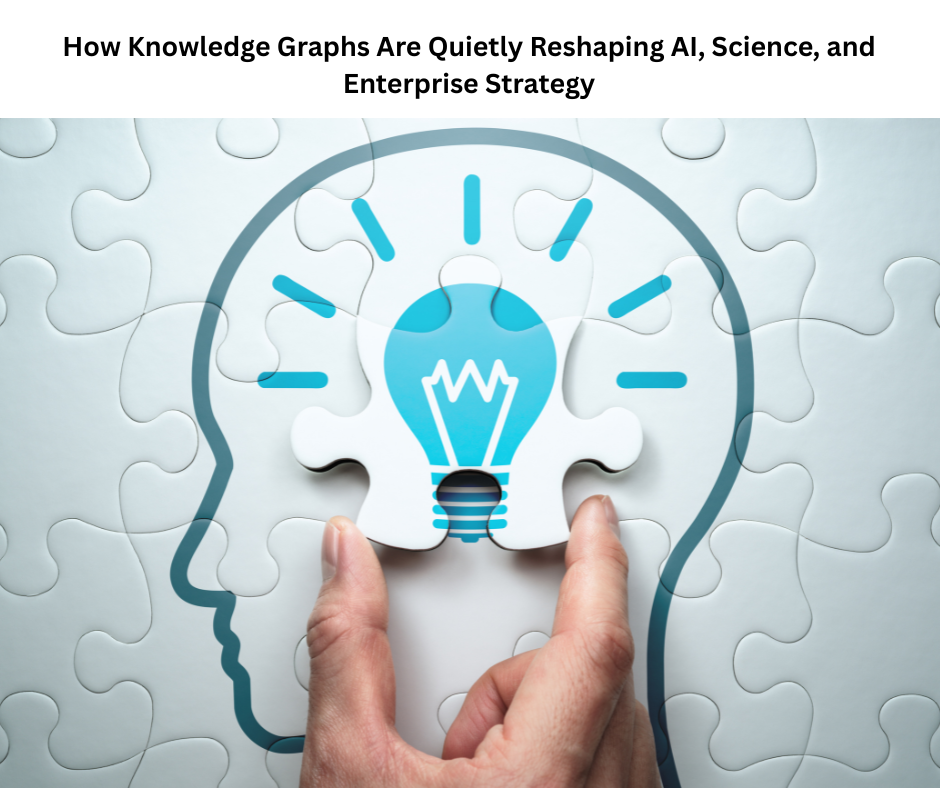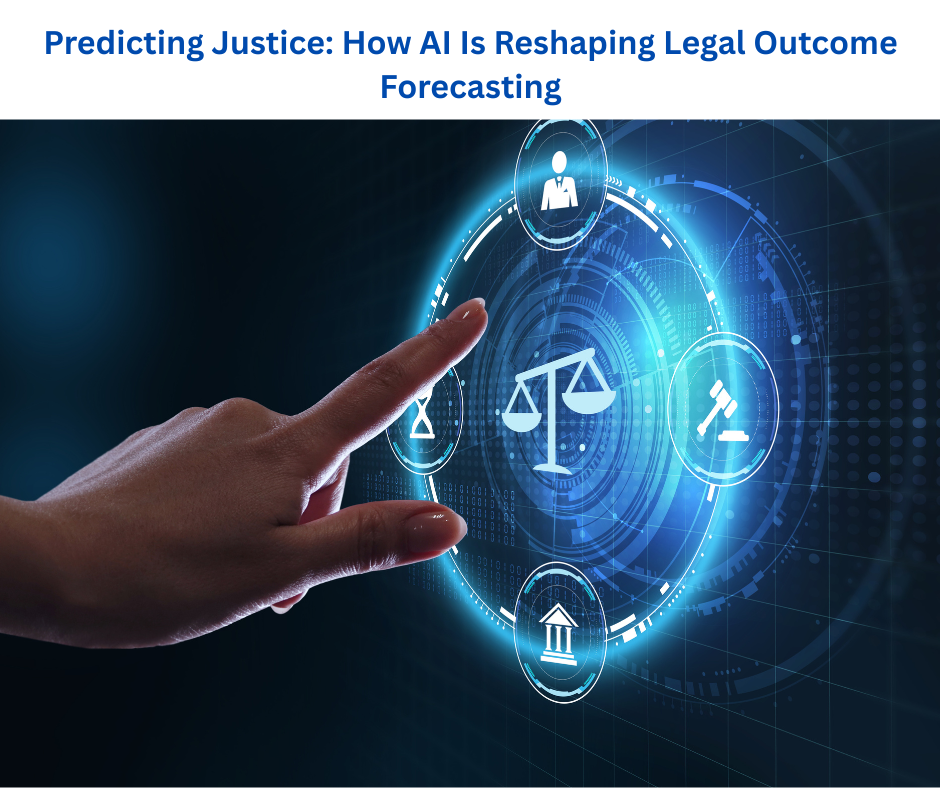Knowledge graphs are a technology that is subtly but significantly changing how robots comprehend, reason, and provide insights in the quickly changing field of artificial intelligence. Knowledge graphs are emerging as the unseen framework for increasingly intelligent systems, precise forecasts, and profound scientific discoveries—even if they aren’t as exciting as generative AI or humanoid robots. Their uses are growing across industries, from simplifying enterprise audits to deciphering drug interactions, and India is well-positioned to gain from this.
So what exactly are knowledge graphs, and why are they suddenly so central to the future of AI?
Knowledge graphs are fundamentally organized representations of data. They create a network that machines can understand by mapping relationships between entities, such as people, places, ideas, molecules, or financial transactions. Knowledge graphs arrange data in nodes and edges rather than rows and columns like typical databases do. This enables AI systems to comprehend not only what something is, but also how it relates to everything else.
The power of knowledge graphs stems from this relational intelligence. They offer context in addition to facts. Furthermore, context is crucial in the AI era.
The Graph Database Revolution
The majority of knowledge graphs are built using graph database platforms, which enable businesses to create flexible, scalable graphs that link intricate data from several disciplines. Graph databases facilitate quick querying, reasoning, and visualization, whether a fintech business is mapping consumer behavior to fraud tendencies or a pharmaceutical company is connecting clinical trial results with molecular structures.
Graph databases provide a means of bringing diverse information together and revealing meaningful insights in India, where data fragmentation is a recurring problem in a variety of areas, including government and healthcare. A knowledge graph, for instance, might be used by a state government to link infrastructure data, land records, and citizen services, facilitating more transparent governance and intelligent urban planning.
The capacity of graph databases to facilitate semantic thinking makes them especially well-suited for artificial intelligence. Semantic search driven by knowledge graphs comprehends purpose and relationships, in contrast to keyword-based search. In scientific research, where uncovering hidden connections between datasets can result in novel theories and discoveries, this is extremely helpful.
When Knowledge Graphs Meet Large Language Models
When knowledge graphs and large language models (LLMs) are combined, the true magic happens. Although LLMs excel at producing writing that reads like it was written by a human, they frequently lack a foundation in structured knowledge. Hallucinations—confident but inaccurate outputs—and inadequate explainability may result from this.
Organizations may significantly increase the accuracy, relevance, and reliability of AI replies by integrating LLMs with knowledge graphs. Consider an enterprise chatbot that can comprehend your question and, to bolster its response, retrieves validated information from a knowledge graph. Or a scientific assistant who can use both organized biomedical data and natural language to describe how two proteins relate to one another.
In industries like legal tech, where AI systems employ knowledge graphs to scan contracts, identify hazards, and even generate jurisdiction-specific clauses, this connection is already being investigated. Such technologies could transform the way judges and attorneys obtain precedent and interpret statutes in India’s legal system, where case law is extensive and frequently unstructured.
Accelerating Medical Research and Personalized Healthcare
The field of biomedical research is one of the most potential uses for knowledge graphs. Data in the healthcare industry is notoriously segregated; patient information, clinical trials, medication interactions, and genomic data are frequently housed in different systems. By tying these dots together, knowledge graphs allow researchers to forecast the effectiveness of medications, find new treatment alternatives, and customize care.
A medical knowledge graph, for example, could enable physicians more precisely customize treatments by connecting a patient’s genetic profile with known drug interactions and clinical trial results. Knowledge graphs were utilized to quickly examine vaccine reactions, treatment regimens, and virus mutations across regions during the COVID-19 pandemic.
India stands to benefit greatly from such developments given its large and diversified population. Researchers could boost the development of indigenous treatments, enhance public health outcomes, and speed up discovery by creating national-scale biological knowledge graphs.
Enterprise Intelligence and Decision Support
Knowledge graphs are becoming used in enterprise planning outside of the fields of research and medicine. Organizations struggle with disjointed data systems that make decision-making difficult in industries including auditing, banking, and urban planning. These sources can be combined into a single, connected view using knowledge graphs.
Consider auditing as an example. By connecting financial transactions, compliance documents, and risk indicators, a knowledge graph enables auditors to identify irregularities and evaluate risk instantly. Graphs can be used in urban planning to link environmental measurements, infrastructural initiatives, and population data to promote more intelligent development.
Knowledge graphs offer Indian companies navigating digital transformation a competitive advantage. They facilitate real-time decision-making, facilitate complicated analytics, and aid in breaking down conventional data silos. The capacity to contextualize data will become a crucial difference as more businesses implement AI-driven operations.
The Road Ahead: Ecosystem Building and Innovation Platforms
Knowledge graphs are a strategic enabler for innovation platforms, not merely a backend tool. A platform can speed up matchmaking, promote cross-border cooperation, and enable tailored discovery by mapping the relationships between companies, researchers, patents, investors, and use cases.
Consider an India-based deeptech startup developing quantum encryption. In real time, a knowledge graph might link it to pertinent scholars overseas, investors in developing markets, and regulatory frameworks in various jurisdictions. The next generation of innovation platforms will be characterized by this type of ecosystem intelligence.
Knowledge graphs are already being used by top ecosystems worldwide to compare best practices, spot gaps, and promote co-creation. India can’t be left behind. The nation is well-positioned to take the lead in graph-based innovation thanks to its talent pool, data wealth, and developing AI capabilities.
Challenges and Considerations
Naturally, creating and managing knowledge graphs is not without its difficulties. Concerns around privacy, interoperability, and data quality must be addressed. Since graphs are only as good as the data they use, it is important that the data used in industries like healthcare and finance be reliable, safe, and ethically supplied.
Furthermore, a knowledge graph’s ontology—the schema that specifies the structure of things and relationships—determines how well it works. Iterative improvement, teamwork, and domain knowledge are necessary for creating strong ontologies.
However, these obstacles can be overcome. Knowledge graphs have the potential to be a key component of India’s AI strategy, supporting both automation and augmented intelligence, if the appropriate frameworks, collaborations, and governance models are in place.
Final Thoughts
Intelligent systems stand out in a world full with data because of their capacity for connection, contextualization, and reasoning. The significance of structured, relational information will only increase as AI develops further, moving from language models to autonomous agents. The message for businesses, inventors, and policymakers is if you invest in knowledge graphs, you’re investing in intelligence’s future.
Reach out to us at open-innovator@quotients.com or drop us a line to delve into the transformative potential of groundbreaking technologies. We’d love to explore the possibilities with you















